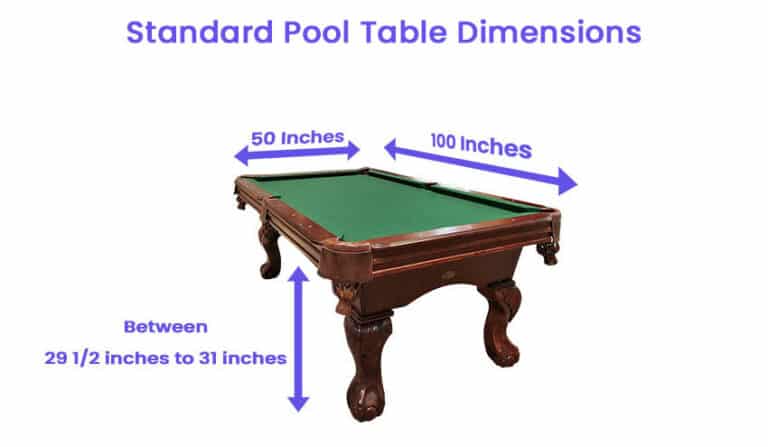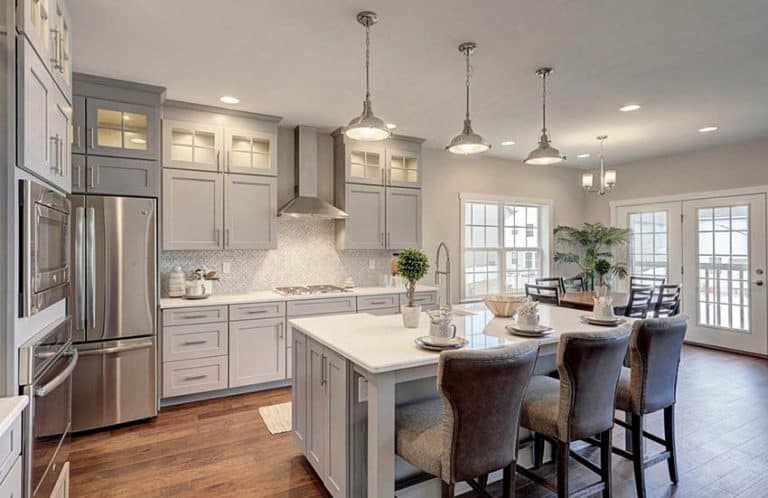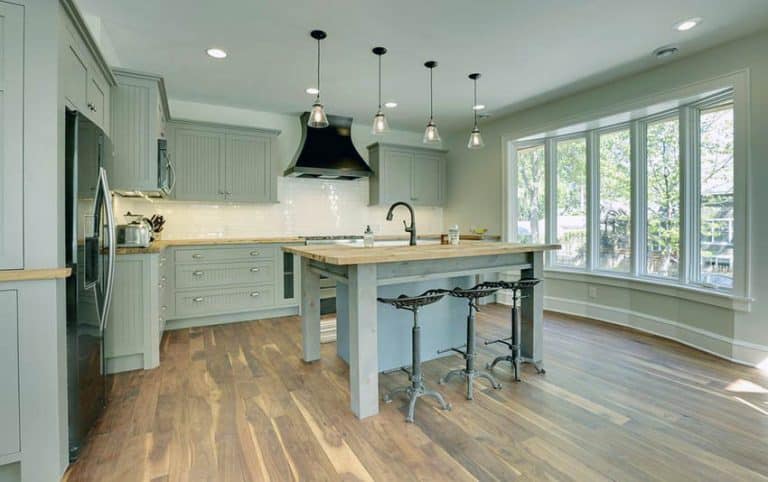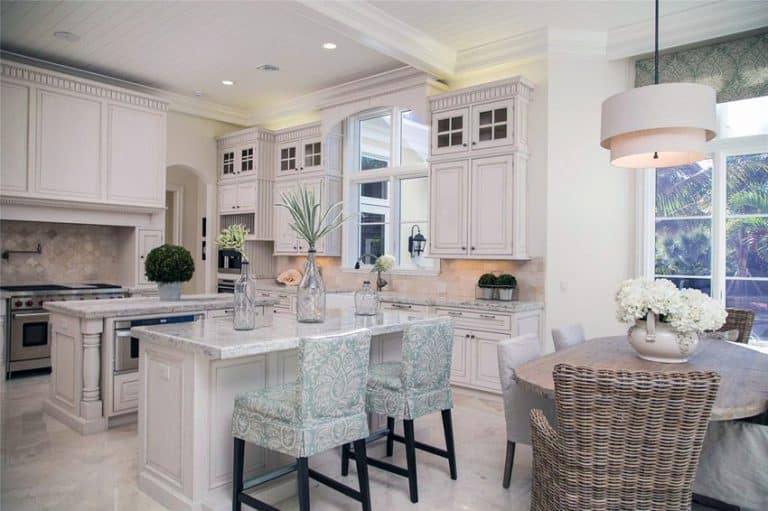Is A Counter Depth Refrigerator Right For Your Kitchen?
Refrigerators come in various types, styles, colors, and sizes, but counter-depth units are making waves in the kitchen appliances department. These pieces of electric equipment can amp a modern kitchen’s aesthetics. But how different is this refrigerator from your standard unit? What counter depth refrigerator dimensions should you consider, and how much space do you lose with such an appliance? Please continue reading if you’re as curious as other homeowners new to counter-depth refrigerators.
What is a Counter-Depth Fridge?

Appreciating a counter-depth fridge requires dissecting the two terms: counter-depth and refrigerator. Everyone knows the latter as equipment for storing and preserving foods and beverages. It’s an appliance that helps mitigate bacterial growth, allowing people to enjoy food and drinks safely. That leaves us with the word “counter-depth.”
As the name suggests, counter-depth describes the refrigerator’s front-to-rear cross-section. Excluding the handle, the fridge’s door surface must, more or less, align with the kitchen counter’s leading edge. Meanwhile, the refrigerator’s back should be a few inches from the wall to promote effective heat dissipation and ventilation.
Hence, we can consider a counter-depth fridge a shallower version of the standard (full-size) refrigerator, with its door and front section extending beyond the counter’s front edge. It might extend about an inch or two but never exceed this measurement. The fridge’s shallow design leads to a smaller storage capacity. That is if the manufacturer doesn’t adjust the width and height to compensate for the reduced depth. That’s why a counter-depth refrigerator is always broader and taller but is shallower than standard fridges.
Counter Depth Refrigerator Dimensions
As mentioned, counter-depth refrigerators are about the same depth as kitchen cabinets and counters. Suppose your counter extends 25 inches or 61 centimeters from the wall. In that case, a suitable fridge would have a nearly identical front-to-back cross-section. It could be up to 27 inches or 68.5 centimeters.
Kitchens with deeper countertops or cabinets can accommodate larger-sized refrigerators. For instance, a 30-inch counter (76 centimeters) can handle a 28- to 32-inch-deep (71 to 81 centimeters) counter-depth fridge on the side.
Most counter-depth units range from 28.875 to 31.25 inches (73 to 79 centimeters) front to back, averaging 30 inches (76 centimeters). Some might be shallower or deeper. By comparison, the standard fridge can have a front-to-back cross-section of 3 feet or 91.5 centimeters.
Cabinet-depth refrigerators are often taller and broader than traditional fridges to compensate for their shallow cross-section. Hence, you can buy an appliance as short as 66 inches (1.67 meters) or as tall as 72 inches (1.83 meters). When you combine this parameter with the ref’s average 30- to 36-inch (76- to 91-centimeter) width, you will see these refrigerators’ capacity is equally impressive.
How Much Space Do You Lose with a Counter-depth Refrigerator?
Some families do not necessarily like counter-depth fridges because they take up too much space. Although these large kitchen appliances have a smaller front-to-back cross-section, their side-to-side span is greater than traditional refrigerators.
For example, suppose a cabinet-depth unit measures 25 inches deep and 66 inches wide. These measurements require a floor area of 1,650 square inches or about 11.45 square feet (1 square meter). On the other hand, suppose a standard unit measures 30 inches deep and 35 inches wide. In that case, the appliance’s space requirement is only 1,050 square inches or 7.3 square feet (0.7 square meters).
This example suggests that the cabinet-depth unit wastes about 600 square inches or 4.15 square feet (0.3 square meters).
As for its food storage capacity, counter-depth units are often taller and broader than conventional fridges. Despite this, cabinet-depth fridges have generally smaller capacities than traditional refrigerators.
The average storage space loss for such appliances is 7 cubic feet. We must reiterate that these food storage machines have about 15 to 25 cubic feet, while conventional units range from 18 to 31 cubic feet.
How to Maximize Space Inside
Despite their shallower cross-section, counter-depth fridges can be as spacious as ordinary refrigerators. If you think your unit doesn’t offer that much storage space, you can check out the following tips to maximize fridge interior space.
• Optimize the refrigerator’s vertical spaces. Most cabinet-depth fridges are taller than usual, making it necessary to utilize every top-down space. You could try a multi-level lazy Susan to organize small bottles and jars. Stackable bins, can holders, and bottle organizers are also worth considering.
• Use clear rectangular food containers with integrated handles. You might want to ditch round bowls and containers because they aren’t space-efficient.
• Consider dividing each refrigerator compartment or drawer and assigning them to different food items. For example, meats and poultry should go in one section, while frozen vegetables should go in another.
How to Know If You Need this Size
Knowing the correct counter-depth refrigerator size is easy by using a simple tape measure, pencil, and paper. Your first task is to determine where in the kitchen you want to place the counter-depth refrigerator. It could be at the counter’s end, underneath a kitchen cabinet, or existing fridge space.
Regardless of the location, you will want to measure the space’s depth. Place the tape measure’s tip against the wall and extend it outward, following the counter’s edge. For example, suppose you measured 25 inches. A 24- or 25-inch-deep counter-depth refrigerator should be great.
Next, measure the side-to-side floor space to accommodate the fridge’s width. We recommend adding an allowance of an inch or two to facilitate appliance ventilation. For instance, a 34-inch appliance would be perfect for a 36-inch floor width. You may need to consider door opening style, especially for those positioned in the corners as they may have trouble fully opening due to their low profile.
Lastly, consider the refrigerator’s vertical space requirements. Check for furnishings (cabinets) from the walls and ceilings that might undermine the appliance’s maximum ceiling. For example, you might want to limit the fridge’s height to 66 inches if the available vertical space (from the floor) is 68 inches.










